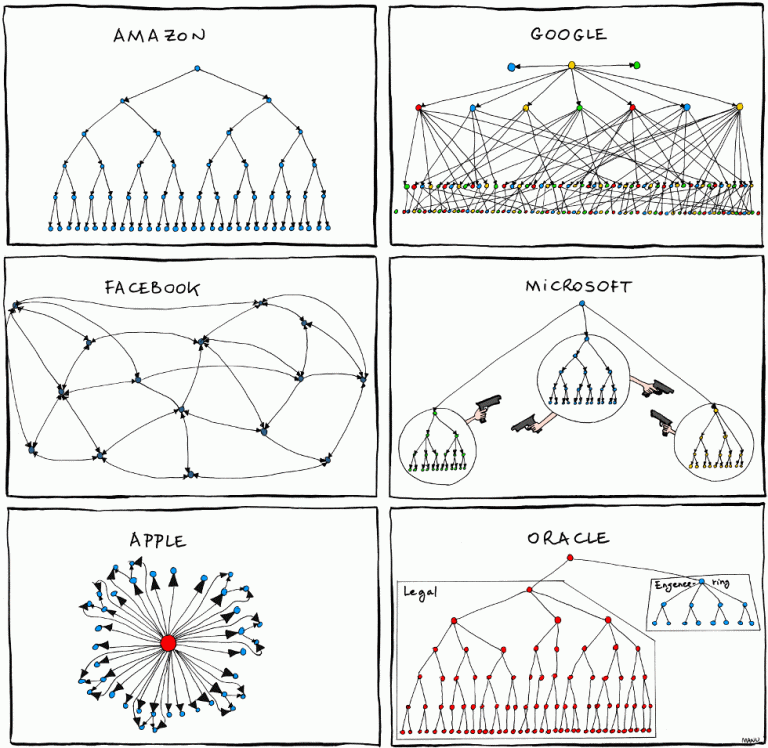"Design thinking is a collaborative problem-solving approach that is iterative, human-centered, creative, and concrete."
Tim Brown - IDEO Co-Founder
Design thinking was theorized in the early 2000s in Silicon Valley following the work of engineer David Kelley and designer Tim Brown of the IDEO agency.
The process is often summarized as a team brainstorming session or creativity workshops with post-it notes. But as we shall see, there is a little more to it...
This is an approach that uses the tools and methods of designers, in order to design solutions that respond to user problems that have been identified beforehand.
The Design Thinking process can be broken down into two main phases in the form of double diamond, or hourglass, as it is a succession of divergence phases (exploring, looking at the bigger picture) and convergence phases (selecting, prioritizing).
User understanding and research
Design thinking is a human-centered approach. Everything starts by observing the field, understanding the needs, habits, and issues experienced. By adopting an empathetic posture, we meet the emotions and reasoning of the users.
It is also an opportunity to do research on the subject's ecosystem. Monitor what has already been done, good and bad practices, existing technologies...
This is the first divergent phase of the process, since it can cross many different areas depending on the subject we are dealing with!
A few designers' methods for user research:
- User interview, surveys...
- "Fly's eye view" observation
- "Live my life" immersion
- Photo report
- Defining a bias
This research work allows to highlight a real problem to be dealt with, which is not necessarily the first one to come to mind. It is about clarifying the perimeter and adopting a bias: identifying the right problem is the best way to find the right solution!
A few tools to synthesize user research:
- Empathy Map
- Persona
- Users’ pathways
- Ideation and creativity
This is where brainstorming and post-it notes come in!
Once a real problem is identified, it is time to come up with creative solutions to solve it.
This is a divergent phase, as it involves exploring and proposing concepts and solutions without restricting their feasibility and desirability.
The goal is not to find THE right solution, but to generate as many problem-solving ideas as possible.
To achieve this, here are some tips for effective brainstorming:
- Come up with crazy ideas, there are no limits!
- Building on the ideas of others, those of colleagues in the team but also from other areas, other cultures...
- No judgement
- So as not to restrict creativity
- Staying focused on the user and the subject
- to be efficient and avoid 2-hours brainstorming sessions without any pragmatic solution
- Search for quantity
Prototyping, testing, and iterative process
It is time to select from all the previously produced solutions the one, or the ones, you wish to test.
To have these solutions tested, they must be materialized using a prototype. The first prototypes are simple and quick to produce, but they provide valuable initial feedback to validate or invalidate the chosen solution.
As design thinking is an iterative process, it is still possible at this stage to go back to the ideation phase and produce or select new ideas to test. It is also possible to further improve your prototype to make it more complete, more precise, and more realistic, and to have your proposed solution tested once more.
A few prototyping suggestions:
- Advertising posters
- Interactive website or app mock-ups
- Scenarios and models
- Product packaging
During the test phases, you should not only test the desirability of your solution: "do you like it?" but understand why this solution is liked or not, and thus analyze whether it answers the problem that was identified earlier.
A few testing tools:
- A/B testing
- Interviews and surveys
- Focus groups
- Feedback grids
If the testing phase is successful, the solution becomes a POC - Proof Of Concept which illustrates the feasibility and desirability of the solution. It's time to move into the production and deployment phase!
Design Thinking and agility
Design thinking is not a project management methodology, but an approach to imagine and design solutions. Thus, it does not fall into the family of agile approaches (such as Scrum, SAFe, XP, etc.) which aim to deliver the product.
However, carrying out the design thinking creation process cannot be applied without adopting an agility posture.
